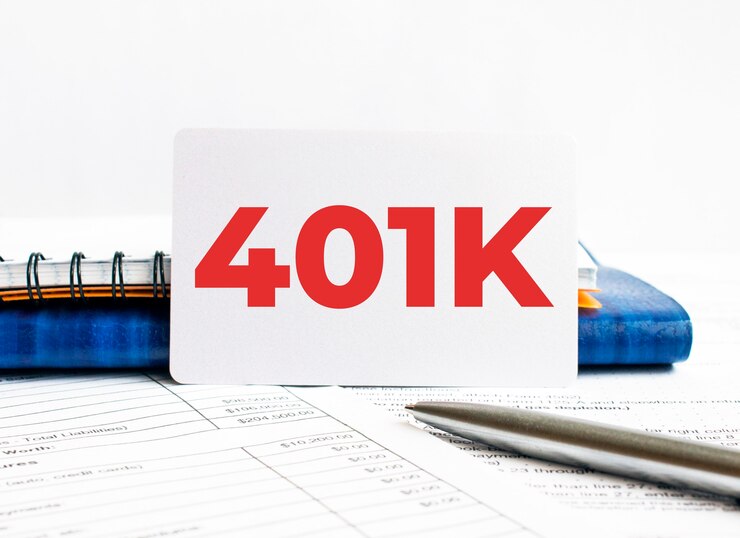- Here Are Four Reasons Why Having An Individual 401k May Be A Good Option For You:
- 1. Higher Contribution Limits
- 2. Greater Tax Benefits
- 3. Flexible Investment Options
- 4. Simplified Administration Process
- How To Set Up Your Solo 401(k)
- Investment Options in a Solo 401(k)
- Contribution Rules & Deadlines
- Avoid Common Mistakes
- Learning More About Solo 401k Options
4 Reasons To Use A Solo 401k

Planning for the future is an important part of any financial strategy.
And with the state of the economy these days, maximizing every opportunity to earn and save more is crucial to making sure that you and your partner are well-situated for your retirement years.
An individual 401k, also known as a solo 401k, is a retirement savings plan designed for self-employed individuals and small business owners who have no employees, except for their spouses. It allows them to contribute to their retirement savings and potentially reduce their taxable income.
Here Are Four Reasons Why Having An Individual 401k May Be A Good Option For You:

1. Higher Contribution Limits
The contribution limit for this type of 401k, as of 2021, is $58,000, or $64,500 if you are over 50 years old. This includes both employee and employer contributions. In contrast, traditional IRAs and Roth IRAs have much lower contribution limits of $6,000 or $7,000 for individuals under and over 50 years old, respectively.
Furthermore, participants can make both employee and employer contributions, allowing them to save a higher percentage of their self-employment income. For example, as an employer, you can contribute up to 25% of your net self-employment income, and as an employee, you can contribute up to $19,500 in 2021.
The higher contribution limits of a solo 401k provide an excellent opportunity for self-employed individuals to save more for retirement while reducing their taxable income.
2. Greater Tax Benefits
Firstly, contributions made to individual 401ks are tax-deductible up to a certain limit. This means that the contributions reduce the individual’s taxable income, resulting in lower taxes owed in the current year.
Additionally, contributions to an individual 401k grow tax-deferred, which means that the earnings on the contributions are not taxed until they are withdrawn during retirement.
Another tax benefit of these 401ks is the ability to make catch-up contributions if the individual is age 50 or older, as mentioned in the previous section.
This allows individuals to contribute more to their retirement savings as they approach retirement age and take advantage of additional tax deductions. It provides significant tax benefits for business owners with no full-time employees, as well as self-employed individuals, making it a valuable tool for retirement planning.
3. Flexible Investment Options
Unlike traditional employer-sponsored 401k plans, where the investment options are limited to the funds chosen by the employer, a solo 401k allows the individual to invest in a wide variety of assets, including stocks, bonds, mutual funds, exchange-traded funds (ETFs), real estate, and even precious metals.
This enables the individual to build a diversified investment portfolio tailored to their personal goals and risk tolerance. Additionally, with a solo 401k, the individual has control over their investment decisions and can make changes as needed without seeking approval from a plan administrator or employer.
This level of control can be beneficial for those who are knowledgeable and experienced in investing, as they can make informed decisions to maximize their returns and minimize their risks. The greater flexibility and control that this type of 401k provides can make a huge difference in your overall net worth by the time you reach retirement.
4. Simplified Administration Process
Unlike traditional 401k plans, individual 401k plans do not require annual Form 5500 filings, as long as the plan assets do not exceed $250,000. This means that plan sponsors do not have to spend time and money on preparing and filing these forms.
Furthermore, since there aren’t any employees other than the plan sponsor and their spouse, there are no requirements for discrimination testing or top-heavy testing. This simplifies plan administration even further.
This makes it the most simplified and cost-effective way for self-employed individuals and small business owners to save for retirement without the administrative burdens that come with traditional 401k plans.
How To Set Up Your Solo 401(k)

Follow this step-by-step guide to create your Solo 401(k) account from scratch. First, select your plan provider. You may select a brokerage firm, bank, or any other specialized firm for that matter.
Secondly, you need to make a more affirmative choice. For example, you may choose a traditional 401(k) or a Roth solo 401(k) account.
After that, you need to do all the required IRS paperwork. In addition, you must fill out the form 5500-SF for reporting. Finally, open an investment account according to your plan.
Investment Options in a Solo 401(k)
Let’s discuss the best options for you. Meanwhile, did you know that employees can invest in one or more than one option?
I would urge you to go with the index fund option first. But don’t invest the whole amount there. Split the rest between small-cap and large-cap funds.
Recently, real estate funds also seem to be quite profitable. So, it can be another investment option for you. Let me know your favorite investment option in the comment section.
Contribution Rules & Deadlines

There are some ground rules and parameters you must be aware of. For example, take care of the Employee and employer contribution deadline first.
The employee contribution deadline is 31st December of the year. However, employer contribution can be de till the tax filing deadline of the company.
Wait! There’s good news if you’re above 50. For example, employees of that age will get an extra catch-up of $5000. Besides, those aged between 60 and 63 will get $11,250 on the same note.
Avoid Common Mistakes
There are three common mistakes that people make, in the case of 401(k) accounts:
1. Don’t incur IRS penalties
2. Don’t overinvest. Rather distribute your funds into other accounts
3. Don’t fail to file your IRS form
Learning More About Solo 401k Options
An individual 401k can be a powerful retirement savings tool for self-employed and small business owners. With higher contribution limits, tax benefits, flexible investment options, and simplified administration, it can help you save for retirement while potentially reducing your taxable income.
However, it’s important to consult with a financial advisor or tax professional to determine which 401k is the right choice for you, as there are some eligibility requirements and contribution limits to consider.
Read Also:










